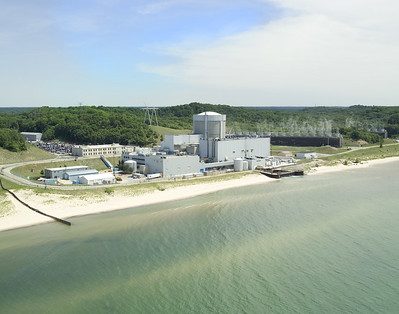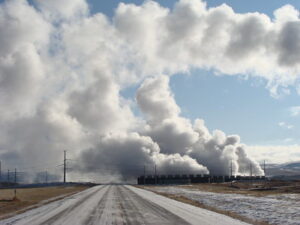Western Wyoming Community College recently received a $1.9M grant to develop a nuclear technology program. The grant will support the state’s approach to generating clean energy. Graduates of the program will work at the TerraPower Natrium nuclear facility, which will open in 2027 in nearby Kemmerer, WY.
Previously, I have written about the need to develop new clean energy-related training programs in Michigan. The state legislature has passed legislation requiring the transition to clean energy sources by 2040, and carbon neutrality by 2050. DTE, the state’s largest power producer will decommission its last coal-burning plant by 2032. Michigan is not alone in its quest for clean energy sources. Virtually all states are moving toward localized clean energy production.
The move isn’t as political as one might think. Coal-fired plants don’t produce energy as efficiently as power plants that use other technologies. The typical coal-burning plant has an energy efficiency of about 33%. Two-thirds of the stored potential energy of coal is lost before it can be converted to electricity.
Natural gas-fired plants have an energy efficiency of about 43%. While natural gas provides a better conversion to electricity, it’s still not considered highly efficient. New technological breakthroughs could soon push solar efficiency close to 50%, although currently, the technology is about 25% efficient. From a practical perspective, wind energy is somewhere between 25% and 45% efficient, although it has a theoretical maximum efficiency of around 60%.
Hydroelectric power can be as much as 90% efficient and it’s also super-clean, but it creates some serious challenges related to its impact on waterways, marine life, and the surrounding land, so it’s not very practical. Nuclear power plants offer about the same efficiency as coal-burning plants do, but they do not create carbon emissions.
Search for energy efficiency leads to clean energy sources
Power companies need to move to more efficient power production methods (which also happen to be cleaner) because they’re more cost-effective than traditional power production. As the demand for power increases, less efficient power production methods simply will not generate enough electricity. Power companies cannot justify building more inefficient power plants to meet consumer demand. Instead, they’re converting to more efficient power production methods.
That includes building new nuclear power facilities and recommissioning previously decommissioned nuclear power plants. In Michigan, work is underway to restart the Palisades nuclear power plant, which was decommissioned in May 2022. The plant’s owner, Entergy, shut down the facility as part of its strategy to address the company’s financial challenges. Holtec subsequently purchased the plant and applied to the Nuclear Regulatory Commission to restart the plant’s single reactor. With regulatory approval in place, the plant is scheduled to restart operations in late 2025. At that time, it will become the first decommissioned nuclear power plant in the United States to be recommissioned.
Constellation Energy recently announced plans to restart the nuclear reactor at Three Mile Island in Londonderry Township, PA in 2028, pending regulatory approval. In partnership with Microsoft, the plant will produce power to support the company’s data centers. If the plan receives NRC approval, Constellation Energy will invest more than $1.6B in the plant to modernize it prior to recommissioning.
There is a near-insatiable demand for electricity, and power producers are looking for ways to generate additional power. A typical nuclear power plant can produce two to three times as much power as a coal- or gas-fired conventional power plant. Despite the increased operational risks, their large power-producing capacity and absence of carbon emissions are what make them an attractive alternative.
Massive growth in demand for power
Nuclear power plants in the US currently generate about 20% of the country’s electricity. This percentage is likely to increase as power producers seek to balance production efficiency and capacity. It is also likely to drive demand for nuclear power technicians.
According to the Bureau of Labor Statistics, nuclear technicians earn an average of nearly $50 per hour, and an annual salary in excess of $100,000. Although the demand for nuclear technicians is declining, the BLS predicts that there will be about 500 openings per year for trained power technicians. Additionally, demand for these workers could increase if power companies move toward opening new nuclear power facilities or recommissioning shuttered facilities.
Among the biggest drivers of demand for electricity are artificial intelligence and data centers. According to the Energy Information Administration, data center power consumption, which currently accounts for about 3.5% of energy usage in the US will nearly triple by 2030.
There will be a huge demand for power technicians (nuclear or otherwise) in the next five years alone. This growth represents a huge opportunity for community colleges that are looking to incorporate more high-wage, high demand programs in their catalogs. Now is the time to take advantage of growth in this area.
Photo Credit: Nuclear Regulatory Commission , via Flickr













